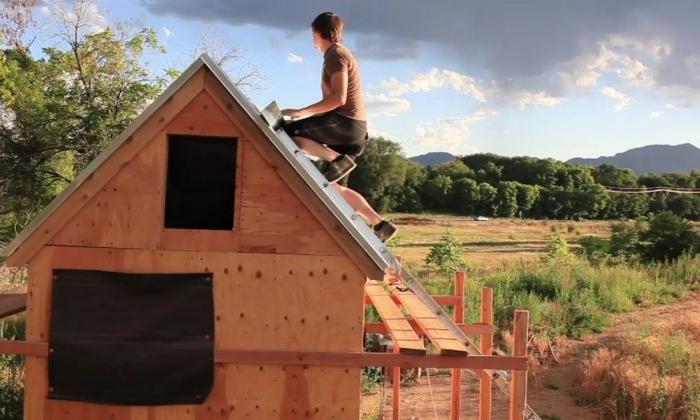Home is where the heart is, and some are finding that smaller homes make the heart grow larger. By moving to smaller homes, some use their reduced expenses to work less so they can spend more time on what they love to do, while others believe having less makes them focus more on what’s important.
“In all, there seems to be a sense of freedom among people who live simply, because they are unencumbered by material things. While it may seem like a self-imposed burden to some, for tiny house dwellers it’s the key to liberation,” said filmmakers Christopher Smith and Merete Mueller, in an e-mail interview.
Smith and Mueller set out to find what makes a home feel like home in their upcoming documentary, TINY. They state houses have doubled in size since 1970, yet people don’t necessarily feel more at home in them. Thus, in their search, they’ve honed in on the folks of the tiny house movement.
Their findings were clear: “It is very rarely the size of a house that makes it feel like a home, so much as the relationships we fill them with.”
“So far we have found that for most people, home is more about the people they live with or near rather than the physical structure itself,” they said, noting that while many still enjoy the aesthetics of their small homes, people tended to place more emphasis on the world outside—their communities, or the land they live on.
There was a general agreement among people they met along the way that “living small has shaped their lives for the better.”
Tiny homes vary in shape and size. Some are trailers that can be taken anywhere on a heart’s whim. Others are miniaturized homes resting on plots of land. Some are decorated with care, and some give little care to outward appearance. And while they may have only one or two rooms, they are filled with warmth.
Moving on Down
Smith and Mueller found similar themes leading people to take up tiny homes. Some were looking to get out of debt and take hold of their finances; some did it for environmental reasons; some wanted to take life, and their homes, on the road; and others “just adore small structures,” they said.
Many folks have interesting stories to go along with this. Two of their recent interviewees, Tammy and Logan, set a 100-item limit on personal possessions. “They said that this has allowed them the physical and mental space to pursue more authentic relationships with friends and family,” Smith and Mueller said.
Meeting the different characters of the film inspired Smith and Mueller to build a tiny home of their own—the building of which is included in the film.
Doing this wasn’t easy, but it reflected what many people who decide to downsize have to go through. Smith did a lot of the handy work, and Mueller notes, “There weren’t any tricks per se, but there was a steep learning curve for Christopher because he has no background in construction or home building.”
The homes are built in the same way as larger homes, but “a lot of the people who build these structures are new to building themselves and have to learn as they go along and make choices about what they want to include in their house,” Mueller said. “Christopher has certainly found that a person can learn a lot from building their own home.”
But a home needs more than just a basic structure to feel like a home. Thus, Smith and Mueller focus mainly on the lives, thoughts, and philosophies of people who have downsized. They note that many of the ideas can be incorporated into other areas of life.
“It is reassuring to us that we have the kind of control over our lives that we can make decisions that reflect who we are and what we want to see more of in the world,” they said, adding, “The point of the film isn’t necessarily to convince all people to live in tiny houses. It is meant to help people ask the right questions about their living situation.”
The film invites people to “think about what makes a good home for them, what they need versus what they want, and how their built environment reflects their values, we are hoping to encourage people to incorporate the elements of tiny houses that make sense for them,” they said.
“We hope the film reminds people that we usually get to choose the buildings we inhabit and we often have the privilege to choose structures that are meaningful, appropriate, financially realistic, and environmentally friendly.”




![[LIVE 4/26 at 10:30AM ET] New Push Started for Global Digital Currencies](/_next/image?url=https%3A%2F%2Fimg.theepochtimes.com%2Fassets%2Fuploads%2F2024%2F04%2F19%2Fid5633115-0426-1080x720.jpg&w=1200&q=75)



Friends Read Free